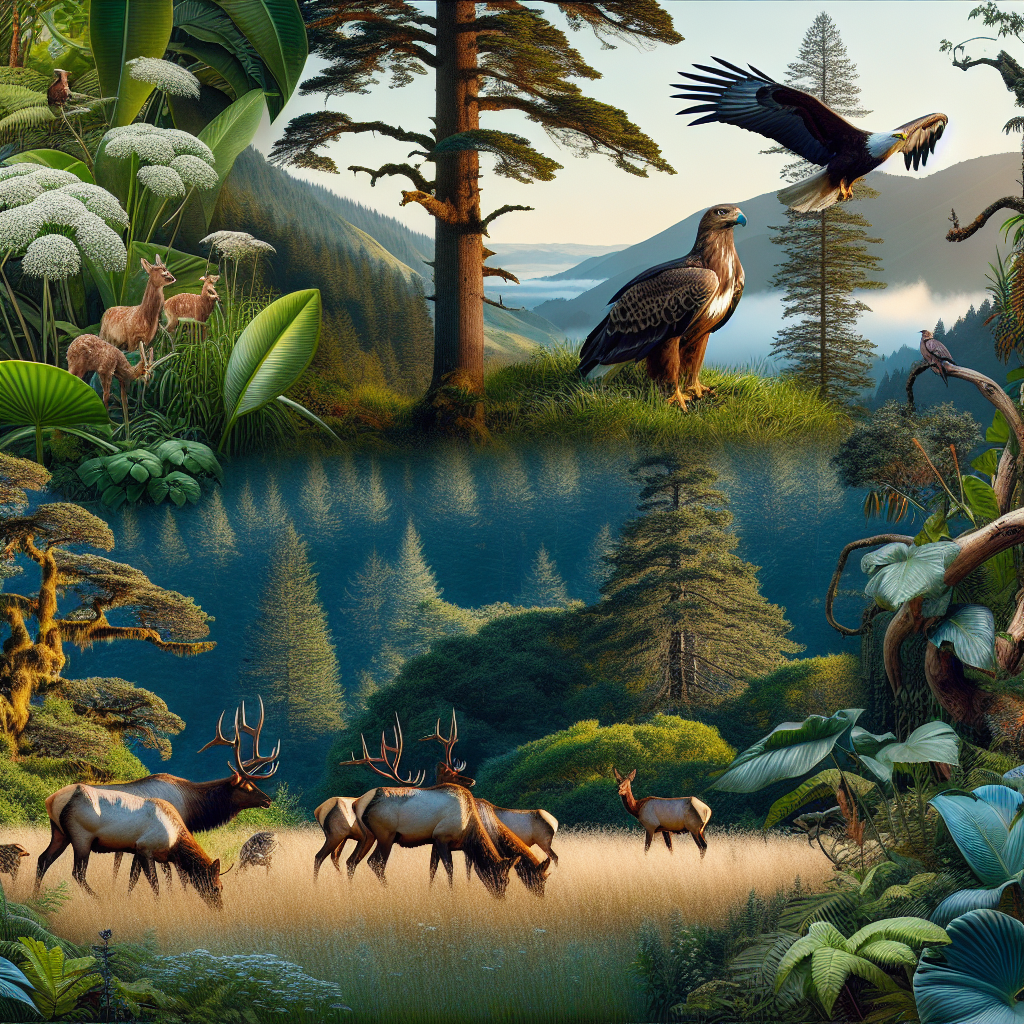Title: Wildlife Viewing in Oregon: Discovering Elk, Eagles, and Much More in the Beaver State
Introduction Every inch of Oregon bleeds natural beauty. From the rugged coastlines and crashing Pacific waves to the soaring Cascade peaks; it’s a state embroidered with wildlife. For those with a love for creatures big or small, the Beaver State serves as a veritable theatre of wildlife activity.
Spotting Elk at Jewell Meadows Wildlife Area
In the lush green meadows of northwest Oregon, resides a spectacle to marvel, the majestic Roosevelt elk. The Jewell Meadows Wildlife Area, a 1,114-acre pasture land, stands as their residence. Best viewed during the winter months when herds descend from hills to feed, bring along a pair of binoculars and a sense of quiet – these creatures are easily spooked.
Beware, do not feed these magnificent animals by hand or get too close. The elk are wild and can be quite dangerous if they feel threatened. It’s always an Oregon local wisdom to observe all wildlife from a safe distance.

More Than Just Birds at the Malheur National Wildlife Refuge
Way out east in the high desert, the Malheur National Wildlife Refuge is a bird-lover’s paradise. With more than 320 bird species in the refuge, there’s never a dull moment. Among all, the gigantic Sandhill Crane is something that can’t be missed during the spring migration. Be prepared to be up early though, as they are most active at dawn. You might be in for a surprise at Malheur too. It’s not uncommon to spot coyotes, mule deer, and if you’re especially lucky, a bobcat lurking around.
Visiting the refuge is best during the temperate periods of late spring and early fall. The extreme summer heat can be punishing while in deep winter, road access can be dicey, thanks to Oregon’s notorious snowstorms.
Wave Hi to Whales Off Newport
Oregon coast, with its dramatic cliffs and horizon-less ocean views, is home to migrating whales. Head toward the sea between December and January or March to June, you’ll be in for a treat. Visit the Yaquina Head Lighthouse in Newport, and stand amidst locals with binoculars glued to their eyes. You gotta remember one Oregonian tip though. The coastal weather changes quickly in the afternoon, so be prepared with layers. A windbreaker or a hoodie is always a good idea.
Eagles and More at Klamath Basin Wildlife Refuge Complex
The southern Klamath Basin Wildlife Refuge Complex is a hotspot for incredible birding opportunities, especially during the winter months. As Oregon freezes over, the basin becomes a haven for migrating birds. Bald eagles steal the show here, numbering in the hundreds. Watching these national symbols soar over the icy landscape is nothing short of magical. While you’re there, do not miss the white-tailed deer and the playful river otters.
Bear in mind that the weather in southern Oregon can get intensely cold and snowy, so come equipped with warm clothing, snow boots, and of course, a blazing love for Nature.
Conclusion
Wildlife viewing in Oregon is a potent reminder of nature’s unparalleled wonders. Its dramatic landscapes and assorted ecosystems offer a diverse range of wildlife. So whether you’re a bird enthusiast, a lover of marine mammals, or a seeker of elusive larger mammals, Oregon’s wildlife will surprise you at every bend and mountain pass.
As with any wildlife adventure, remember to respect the animal’s habitat. Keep a safe distance, avoid feeding them, and pack out what you pack in to preserve the wilderness for generations to come. So go ahead, pull out that Oregon atlas, mark these spots, and step into the wild with a new sense of wonder. Because, here in Oregon, nature’s theatre awaits your presence.
